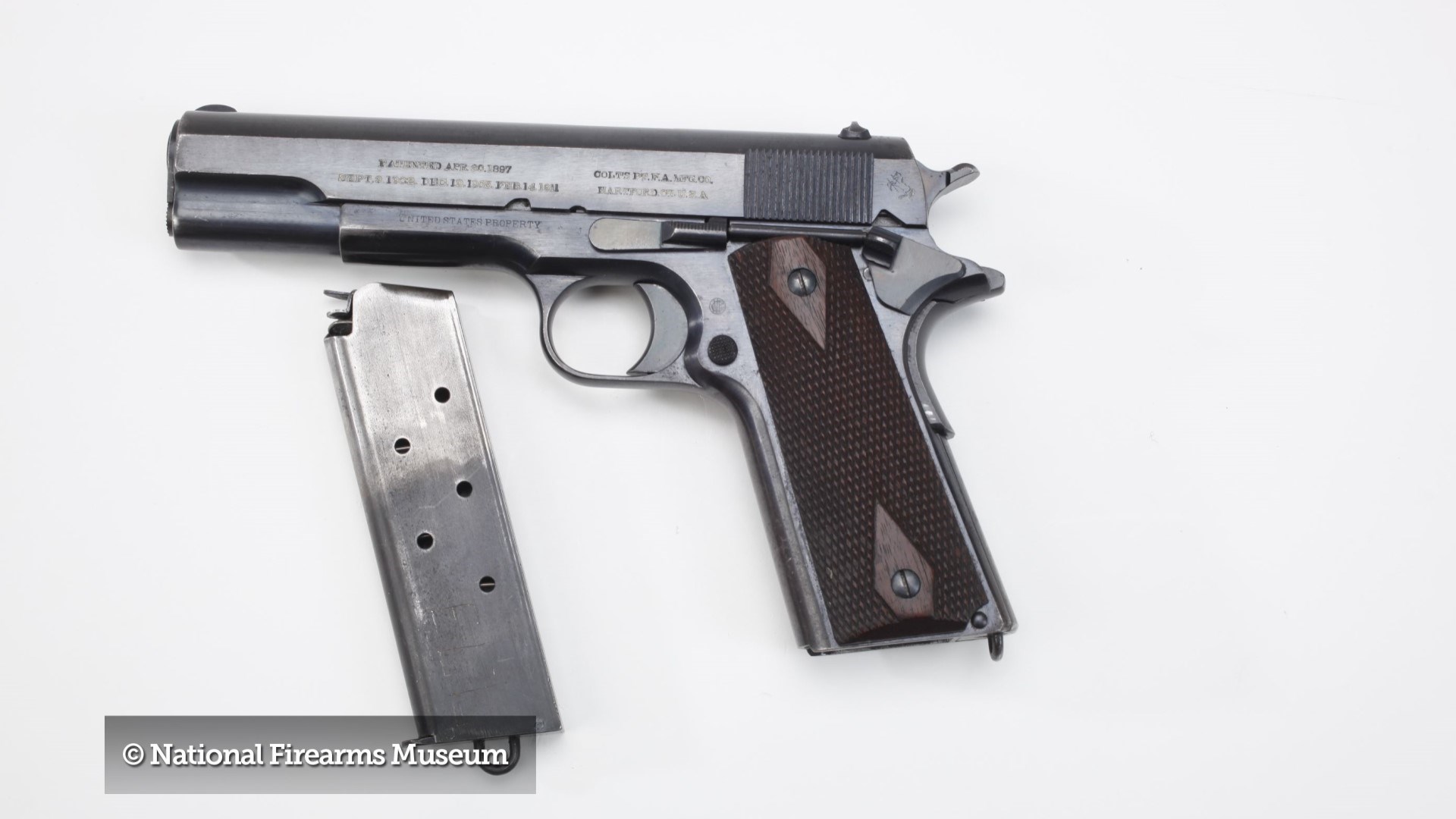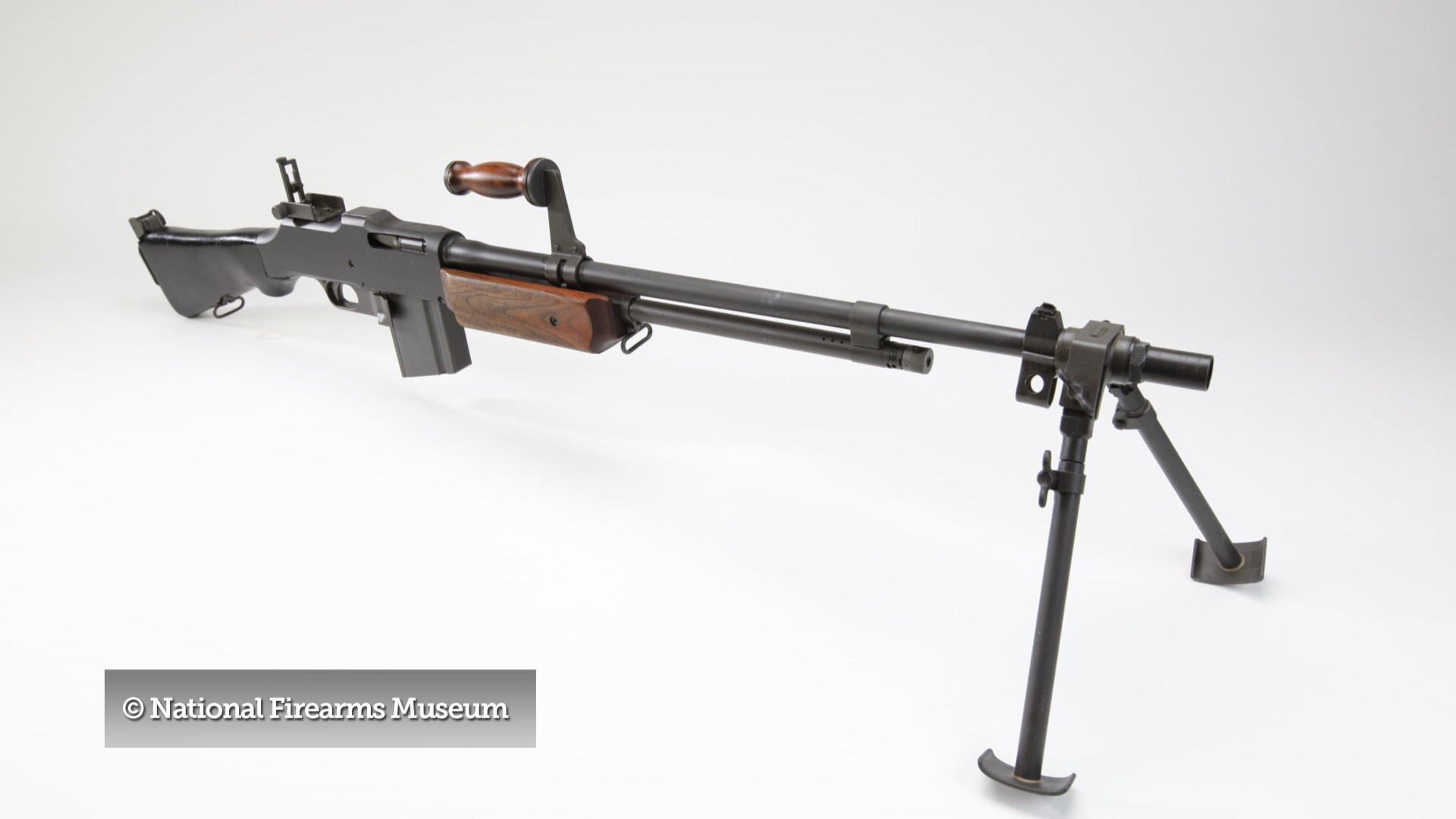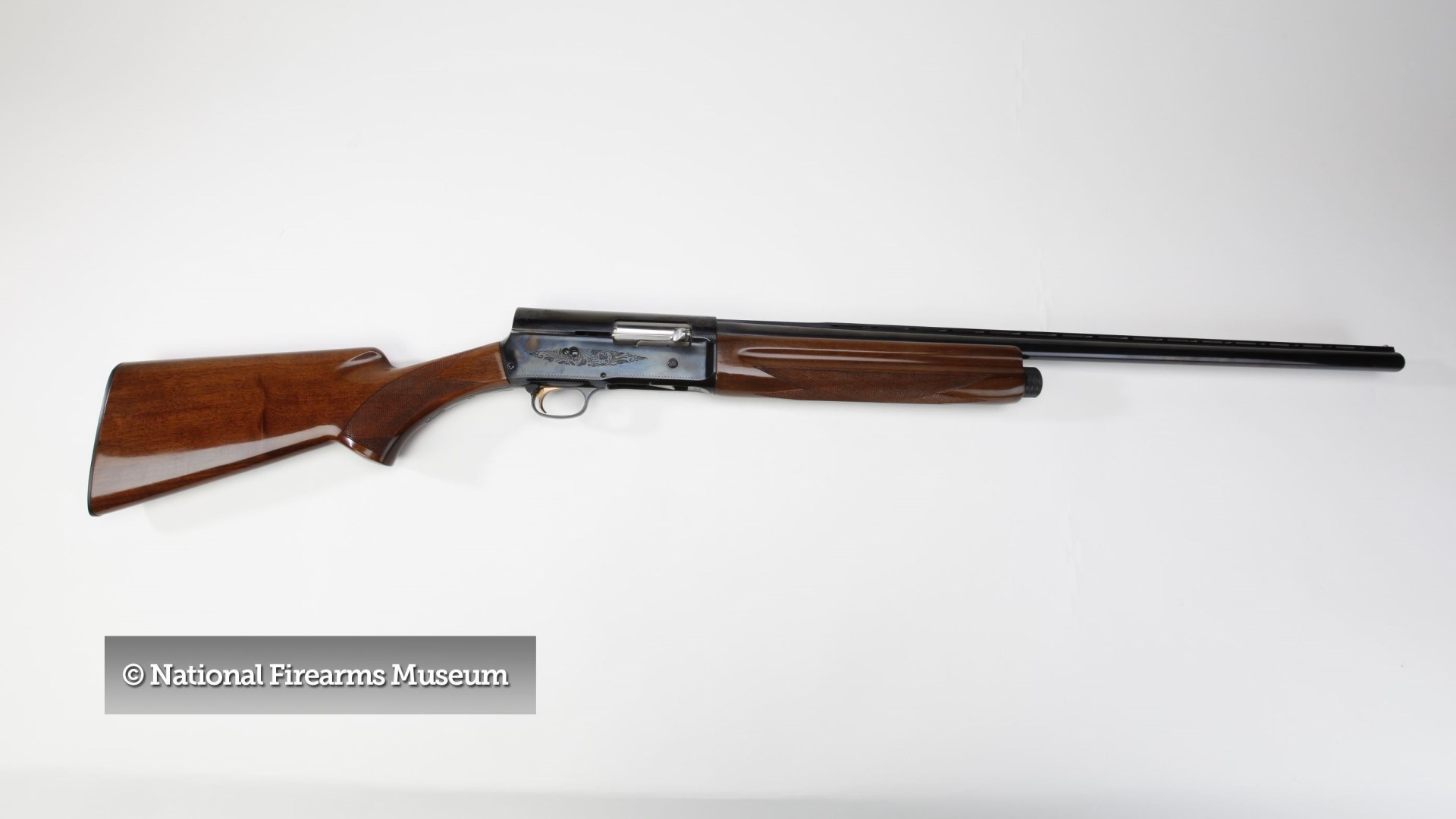
In all of American firearms history, there is no more legendary name than John Moses Browning. Born in 1855, he was not only an inventor and innovator, he was also a genuine gun genius. Browning made his first firearm at age 13 in his father’s gun shop, and was awarded the first of his 128 firearm patents in 1879 at just 24 years of age.
“John M. Browning is the unrivaled Dean of arms inventors and designers,” said Philip Schreier, director of NRA Museums. “Throughout the long history of firearms, from the year 1350 to the present, no one person has had such a staggering effect on the evolution of firearms technology as John Browning. Now, nearly 100 years after his death, most of his firearms designs and patents are still being used on a daily basis to defend life and liberty.”

Handgun: Colt Model 1911
This pistol takes its model number from the year Colt introduced it, 1911. And from then until 1984—over seven decades—it was the standard-issue sidearm for the entire U.S. Armed Forces, eventually replaced by the 9mm Beretta M9. Some modern versions of the gun are still in service with American military units, such as the U.S. Army Special Forces.
Browning developed the Model 1911 in response to the U.S. Army’s having sought a semiautomatic handgun to replace its outdated revolvers. His design won the highly competitive Army contract because the handgun was not only extremely reliable, but also had a number of unique attributes. For example, it was one of the first guns with parts that could be used to disassemble itself for simple, easy takedown and cleaning.
In addition to its military history, the Model 1911 is a very popular handgun with the general public yet today. An estimated 150 firearms manufacturers or more worldwide make and sell Model 1911-style handguns in various calibers. Compact variants of the gun are also in high demand as a concealed-carry gun because of the design’s relatively slim width and the stopping-power of the .45 ACP (Automatic Colt Pistol) caliber.

Rifle: M1918 Browning Automatic Rifle (BAR)
An absolutely awesome battlefield weapon in terms of firepower, John Browning invented this rifle in 1917. As a result, it saw only limited use near the end of World War I, but extensive use during World War II and the Korean War. The BAR (short for Browning Automatic Rifle) is a beast of a firearm. Weighing 16 to 20 pounds, the gun is selective-fire, capable of firing .30-06 Springfield-caliber ammunition in semiautomatic, full-automatic or burst modes. The rifle is fed by detachable box magazines of either 20 or 40 rounds
This so-called “light” machine gun was designed by Browning to be carried and fired by advancing troops while supported with a sling over the shoulder and fired from the hip without stopping or aiming, a concept known as “walking fire.” For more focused, aimed shooting, BAR rifles came equipped with a bipod after 1938.
Military personnel were not the only ones impressed with the firepower and portability of the BAR. Criminals also took notice, two of the more infamous being Clyde Barrow and Bonnie Parker (“Bonnie & Clyde”), who robbed banks throughout the South and Midwest during the 1930s. Clyde’s weapon of choice was the BAR, which he obtained—along with armor-piercing ammunition—by periodically breaking into National Guard armories.
But Bonnie could also handle one of these heavy rifles, even though she was not a large woman. A Missouri highway patrolman, forced to take cover behind an oak tree when Bonnie opened up on him with a BAR stated, “That little red-headed woman filled my face with splinters on the other side of that tree with one of those d*mned guns.”

Shotgun: Browning Auto-5
A revolutionary design for its day—and the first successful, mass-produced semiautomatic shotgun—the Auto-5 has a squared-off receiver back, earning it the nickname “Humpback Browning.” John Browning designed it in 1898, receiving a patent for the gun in 1900. Produced continually for the next 100 years by several gunmakers, production finally ceased for this fine firearm in 1998.
The name Auto-5 needs a bit of explanation, however. Auto is short for autoloader, not automatic, possibly causing some confusion because the gun has a semiautomatic action. The numeral 5 stands for the total number of shells the shotgun can hold when fully loaded: one in the firing chamber and four in the magazine.
An interesting sidenote is that the famous 20th Century author, shooter and hunter Ernest Hemingway didn’t think much of semiautomatic shotguns in general—preferring instead Browning’s double-barreled Superposed over/under shotgun—but he liked the Auto-5. “I shot a Browning [Auto-5] for twelve years, and it is the only good automatic shotgun,” he said. Ironically, it’s also the gun that nearly killed him.
Hemingway would often invite the rich and famous from Hollywood to Sun Valley Resort in Idaho for fall weekend bird hunts. It was during one of those hunts that socialite Mary Raye Hawks, wife of film director Howard Hawks, was handling a 16-gauge Browning Auto-5 (known as the Sweet Sixteen) less than safely when it went off, barely missing Hemingway—who was kneeling down just a few feet away tying his bootlace. The shot passed so close to the back of Hemingway’s head that it singed his neck hair.
The real test of any firearm is the test of time, and the three guns mentioned above have all passed that lengthy, detailed examination with flying colors. But Browning had many other successes, as well, such as the development of various Winchester rifles, and the water-cooled M1917 and air-cooled M1919 heavy machine guns. And yet today, when the legendary Browning M2 .50-caliber “Ma Deuce” machine gun arrives on the battlefield, enemies scatter.
John Moses Browning died doing what he loved best, inventing and designing firearms. While at his workbench one day in 1926, at the age of 71, he simply slumped over and slipped into firearms history.